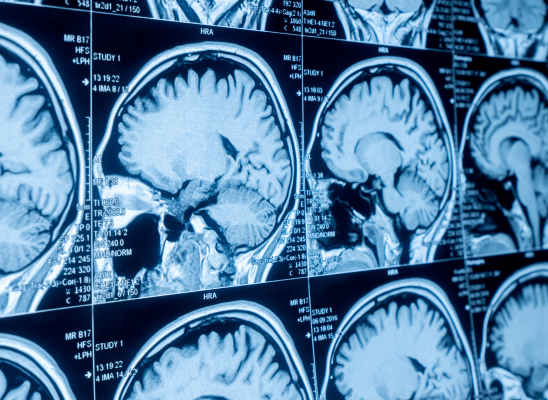
Online test
Find out the severity of your symptoms with this free online test
Obsessive-Compulsive Disorder (OCD) is a mental health condition that makes people have unwanted thoughts, known as obsessions, and urges them to perform certain actions, or compulsions, to ease the anxiety those thoughts cause. These thoughts and actions can sometimes feel out of control, overwhelming, and hard to shake off. Fortunately, Cognitive Behavioral Therapy (CBT) is one of the most effective treatments for OCD, especially when it comes to challenging and changing the faulty thought patterns that drive the compulsive behaviors. In this article, we’ll dive into how CBT works, provide examples of common faulty thought patterns in OCD, and explore the strategies CBT therapists use to help individuals break free from the cycle of OCD.
What is Cognitive Behavioral Therapy (CBT)?
Cognitive Behavioral Therapy (CBT) is a type of therapy that focuses on helping people recognize and change their negative thought patterns and behaviors. The idea behind CBT is simple: our thoughts, feelings, and behaviors are all connected. So, by changing the way we think or act,we can change the way we feel.
For someone with OCD, CBT helps identify the obsessive thoughts that create anxiety and the compulsions that are performed to reduce that anxiety. Through CBT, individuals learn how to challenge these thoughts, replace them with healthier, more realistic beliefs, and reduce the need for compulsive behaviors. When it comes to changing behaviors, one key technique used in CBT is Exposure and Response Prevention (ERP), which involves exposing individuals to their feared thoughts or situations and teaching them not to perform the compulsions that usually follow.
Faulty Thought Patterns in OCD
In OCD, faulty thought patterns can make ordinary situations feel overwhelming or terrifying. These distorted ways of thinking are often irrational and unrealistic. Here are a few common examples of faulty thought patterns in people with OCD:
Overestimation of Danger People with OCD often overestimate how dangerous or harmful a situation is. For example, someone with contamination OCD might think that touching a door handle will definitely lead to serious illness, even though the actual risk is extremely low.
- Example: “If I don’t wash my hands 20 times after touching that doorknob, I’m going to get a serious disease and it will ruin my life.”
Catastrophizing Catastrophizing is when someone expects the worst possible outcome in any situation, no matter how unlikely it is. For someone with OCD, this means believing that small mistakes or harmless actions will lead to disastrous consequences.
- Example: “If I forget to lock the door, someone will break into the house and hurt my family.”
Magical Thinking Magical thinking is the belief that one’s thoughts, actions, or behaviors can directly influence an outcome, even though there is no logical connection. In OCD, people might believe that performing a ritual or a compulsive behavior can prevent something bad from happening.
- Example: “If I don’t touch the light switch in a specific way, something bad will happen to my loved ones.”
Hyperresponsibility People with OCD might feel an exaggerated sense of responsibility for preventing harm to others. This can make them feel guilty or anxious about things they have no control over.
- Example: “If I don’t check the stove five times, the house will burn down, and it will be my fault.”
Intolerance of Uncertainty Intolerance of uncertainty refers to the discomfort that comes from not knowing whether something will happen. Many people with OCD feel the need for absolute certainty before they can relax or stop engaging in compulsions.
- Example: “I can’t stop thinking that maybe I didn’t actually lock the door, and I need to check it again to be sure.”
CBT Strategies for Challenging Irrational Thought Patterns
The goal of Cognitive Behavioral Therapy (CBT) is to help individuals identify faulty thought patterns and replace them with more rational, realistic ways of thinking. Below are strategies used in CBT to address these patterns:
Cognitive Restructuring
Cognitive restructuring involves identifying negative or distorted thoughts and challenging them by examining the evidence for and against the thought. The goal is to help individuals adopt more balanced, realistic beliefs.
Example: For someone with Contamination OCD who fears getting sick from touching a doorknob, the therapist might ask: “What is the actual risk of getting sick from touching a doorknob? How often do you actually get sick from doing so?” This helps the person see that their fear is exaggerated and that the risk is minimal.
Thought-Action Fusion, Thought-Personality Fusion, and Thought-Event Fusion
Thought-action fusion refers to the belief that thinking about something harmful makes it more likely to occur. Thought-personality fusion is the belief that having a certain thought means you are a bad or immoral person. Thought-event fusion is the idea that thinking about an event can cause it to happen. CBT works to break these fusions by helping individuals understand that thoughts are not actions, and that having a thought does not define their identity or make it a reality.
Example: If a person with Harm OCD has a persistent thought that they might harm someone, CBT would help them recognize that the thought is not the same as the action, and it doesn't reflect their character or intentions.
Thinking Through the Pros and Cons of Believing Intrusive Thoughts
One useful strategy in CBT is to help individuals weigh the pros and cons of believing their intrusive thoughts. By evaluating how much mental and emotional energy they invest in these thoughts, individuals can start to see how they negatively impact their lives and challenge their belief in the irrationality of these thoughts.
Example: A person with Contamination OCD might be encouraged to examine the pros and cons of spending excessive time worrying about contamination. This process can reveal that, although the worry might feel necessary, it causes more harm than benefit.
Psychoeducation on Intrusive Thoughts and Brain Responses
Psychoeducation is an essential part of CBT for OCD. By educating individuals on how intrusive thoughts affect their brain (e.g., activating the fear response in the amygdala), they can better understand that these thoughts are not a reflection of reality, but rather the brain’s response to perceived threats. Understanding that the brain often misinterprets harmless thoughts as dangerous can help individuals challenge these thoughts more effectively.
Example: A therapist might explain how the brain's fear response causes a heightened state of anxiety when intrusive thoughts arise, reinforcing the importance of recognizing that these thoughts are not an accurate reflection of actual danger.
Mindfulness and Acceptance
Mindfulness teaches individuals to observe their thoughts and emotions without judgment or reaction. This strategy helps reduce the power that distressing thoughts have over them by allowing them to accept the thought without acting on it.
Example: If a person with OCD is fixating on a thought like “I didn’t check the stove properly,” they might practice mindfulness by acknowledging that the thought is present but choosing not to act on it. Instead of getting swept up in worry, they accept the thought and continue with their day, learning that their thoughts do not dictate their actions.
Real-Life Example of CBT in Action
Imagine a person named Sarah who has OCD and experiences constant doubts about whether she has locked her front door. She checks the door multiple times before leaving, but she still feels anxious, fearing that something terrible will happen if she hasn’t locked it properly. Through CBT, Sarah works with her therapist to challenge her obsessive thoughts.
Her therapist might use cognitive restructuring by asking Sarah to evaluate the evidence for her fears. For example, they might explore how many times Sarah has left her house without incident and discuss the probability of something bad happening if the door isn't locked perfectly. They would help her recognize that the risk of something going wrong is incredibly low.
Additionally, her therapist might ask Sarah to think through the pros and cons of believing her intrusive thoughts. They might explore how much time, energy, and distress Sarah spends worrying about the door, helping her see that this mental investment provides no real benefit. The therapist might guide Sarah to recognize that her excessive worry is causing unnecessary stress and that she is unlikely to be any safer for checking the door repeatedly.
By evaluating the evidence and weighing the pros and cons, Sarah gradually learns to see that her fears are disproportionate. Over time, these strategies help her challenge her obsessive thoughts and reduce the need for compulsive behaviors like repeatedly checking the door.
Conclusion
CBT is a powerful tool for individuals struggling with OCD, particularly when it comes to identifying and challenging the faulty thought patterns that drive compulsive behaviors. Through strategies like cognitive restructuring, behavioral experiments, and graded exposure, individuals can learn to see their thoughts and fears more realistically. While OCD can be challenging, the good news is that with the right treatment, people can regain control over their thoughts and behaviors, leading to a better quality of life. It’s important to remember that progress may take time, but with dedication and the support of a trained therapist, change is possible.
If you or someone you know is struggling with OCD, including harmful thoughts or compulsions, you're not alone, and support is available. StopOCD offers a tailored online therapy program that utilizes evidence-based treatments, like CBT, to help individuals address the root causes of their OCD and regain control over their lives. Our program provides flexible support from the comfort of your own home, making it easier to start your journey toward healing. Don’t let OCD control your thoughts and behaviors any longer—take the first step today and visit StopOCD’s Online Therapy Program to learn how our expert therapists can help guide you through the recovery process. Start living a life free from OCD, one step at a time.
References
- American Psychological Association. (2017). Cognitive behavioral therapy for OCD. https://www.apa.org/ptsd-guideline/treatments/cognitive-behavioral-therapy
- Foa, E. B., & McLean, C. P. (2016). Psychological treatment of obsessive-compulsive disorder. The Journal of Clinical Psychiatry, 77(6), e1-e6. https://doi.org/10.4088/JCP.15com10267
- Mayo Clinic. (2021, November 9). Obsessive-compulsive disorder (OCD) treatment options. https://www.mayoclinic.org/diseases-conditions/obsessive-compulsive-disorder/diagnosis-treatment/drc-20335269
- National Institute of Mental Health. (2020, August). Obsessive-compulsive disorder. https://www.nimh.nih.gov/health/topics/obsessive-compulsive-disorder-ocd
- Franklin, M. E., & Foa, E. B. (2011). Disorders of anxiety: Obsessive-compulsive disorder. In D. H. Barlow (Ed.), Clinical handbook of psychological disorders: A step-by-step treatment manual (4th ed., pp. 259-300). Guilford Press.
Online test
Find out the severity of your symptoms with this free online test
Start your journey with StopOCD
Take control of your life and find freedom from OCD through professional therapy and evidence-based cognitive behavioral techniques.
Start Now



